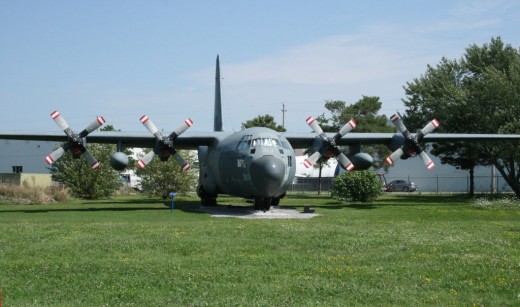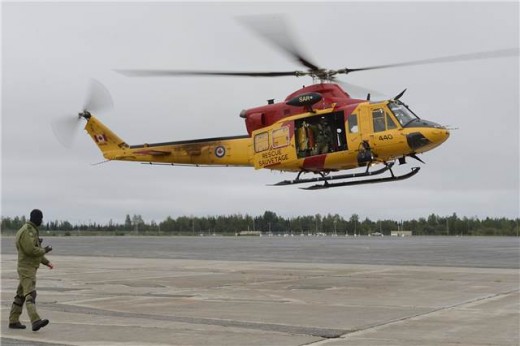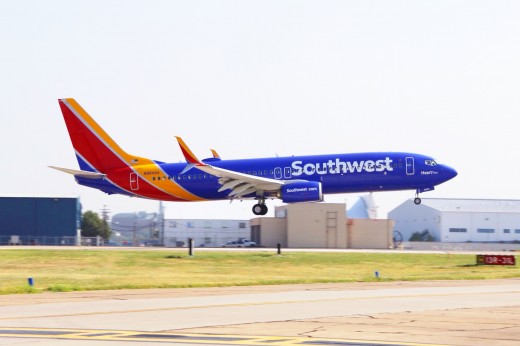 Scroll Down to see all of this week’s updates
Scroll Down to see all of this week’s updates
Museum Parts Raise Political Ruckus

The federal government found itself in the odd position of defending a decision to raid a museum for parts to keep one of its search and rescue aircraft in the air.
The Ottawa Citizen ran a story earlier this week about some enterprising techs at CFB Trenton who took two working inertial navigation units out of a retired B model C-130 Hercules on display at the National Air Force Museum at Trenton. The INS in the B models is the same as those as the one that broke in an H model. The swap was successful and the newer Herc was returned to service.
The newspaper got hold of Defence Minister Rob Nicholson’s office for comment and was told that the techs “took initiative” to locate the spares.
Museum officials said that while classified equipment is always removed from aircraft that go to the museum, they’re mostly intact. They suggested the spare parts acquisition wasn’t a normal occurrence.
On the opening day of the new session of Parliament on Monday, NDP defence critic Jack Harris took a shot at Nicholson essentially asking if museums were to become a regular parts source for active aircraft. Nicholson at first called the museum scavenging a “mistake” and later his office clarified that the mistake happened when the serviceable parts weren’t stripped from the Herc before it went to the museum.
Harris also used the episode to raise the long-delayed procurement of replacement search and rescue aircraft. The earliest new SAR aircraft could be delivered is 2019.
Alberta Selling Government Aircraft

Alberta’s new premier has taken the politically expedient but impractical step of selling the province’s four aircraft and laying off the 27 staff who kept them flying.
The sale of three King Airs and a Dash-8 was among Jim Prentice’s first announcements after he won the Conservative leadership race last week.
“Effective immediately, the premier and ministers will be expected to fly commercial as the primary method of transportation,” Prentice said at a news conference.
The aircraft cost Albertans about $9.5 million a year to operate but it was their use by former Premier Alison Redford that cost her the job. Redford resigned both the premiership and her seat as an MLA earlier this year after numerous revelations of her use of provincial assets.
Among her alleged excesses were her use of government aircraft on personal trips, including sending her daughter and her friends as passengers.
The aircraft were selected to allow access to small airports in rural areas and were reportedly well used in that service. Prentice said a government-owned fleet “is not necessarily the most appropriate way” of accomplishing that, meaning charter services might be able to expect more government business.
Government accountants added up the numbers and determined that flying commercial and chartering when necessary would have saved the government $3.9 million last year.
The 13 pilots and 14 support staff running the aircraft fleet will be treated “humanely” said Prentice.
Search and Rescue Exercise in Labrador

SAREX 2014 is under way in Newfoundland and Labrador and the combined military and civilian exercise is testing the abilities of the search and rescue system.
RCAF, Civilian Air Search and Rescue Association (CASARA) volunteers along with local officials are conducting realistic scenarios and deploying as if the emergencies are real.
5 Wing at Goose Bay is hosting the exercise and the rugged terrain of the area provides plenty of opportunity for realistic training. “5 Wing is unique in that it offers excellent infrastructure to support SAREX participants while being in close proximity to Labrador’s environmental realities to challenge them,” said Lt. Col. Luc Sabourin, the CO of 5 Wing.
The exercise will expose participants to land, air and water-based search and rescue scenarios with CASARA volunteers fulfilling their normal search and support roles. There are four CASARA aircraft involved.
The RCAF is participating with Hercules and Buffalo fixed wing aircraft and Griffon and Cormorant helicopters.
Snowbirds Do Raincheck Show

By Ken Lin
Canadian Forces Snowbirds and the CF-18 demo team were scheduled to perform at the airshow at Stratford Airport in Southern Ontario this past Wednesday, unfortunately heavy downpour forced the airshow to be cancelled to the disappointment of the fans and organizers.
While the CF-18 team had to travel to their next show-site in the U.S., the Snowbirds Team did had a rare few personal days off prior to their next airshow, so on their own initiative, the Snowbirds made arrangements to delay their return to home base in Moose Jaw, Saskatchewan, and stayed an extra day to see if a “make-up” show can be flown on Thursday for the folks at Stratford.
Although the weather condition was still not ideal on Thursday, fortunately the rain held off and the cloud ceiling remained high enough, allowing the Snowbirds to perform their “Flat Show” in fornt of the folks who came out braving the cool temperature and risk of rain.
An autographing session at the airport followed the aerial performance, with folks young and old lined up for over an hour to get their posters signed by the Snowbirds members.
The organizers of the show was ecstatic and extremely grateful for the selflessness and generosity shown by the Snowbirds, who collectively gave up a personal day off in order to put on this show, exemplifying and demonstrating the Canadian Forces members going beyond their call of duty when carrying out their missions.
Southwest Looking At Canada

Southwest Airlines has confirmed that it has expansion plans that could include Canada, perhaps by the end of the decade.
“I’d be surprised if we weren’t in Canada at least by the end of the decade,” CEO Gary Kelly told reporters at a media event to unveil the airline’s new livery last week in Dallas. The Globe and Mail attended the event.
Southwest carries more passengers in the U.S. than any other airline but it only recently started to explore international destinations. It now serves a few Caribbean destinations and Mexico City.
The airline served as the model for WestJet and the two airlines almost arranged a codeshare deal about six years ago but it didn’t go through. WestJet and Air Canada serve dozens of U.S. airports and Southwest would be formidable competition. It would also likely mean lower fares on the routes Southwest serves.
“Wherever we go we will want to lower fares and stimulate the market to the extent we can,” the Globe quoted Kelly as saying.
